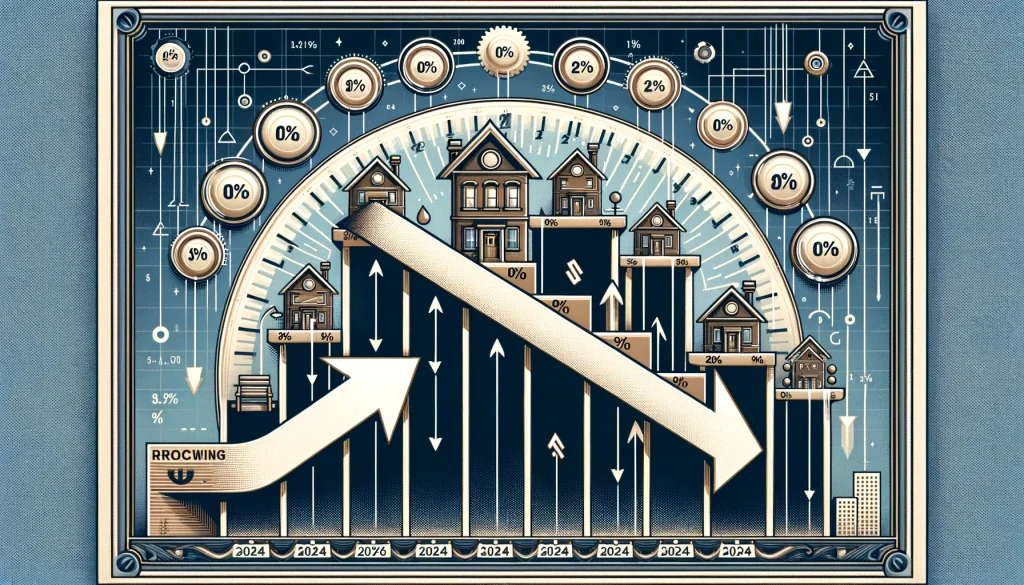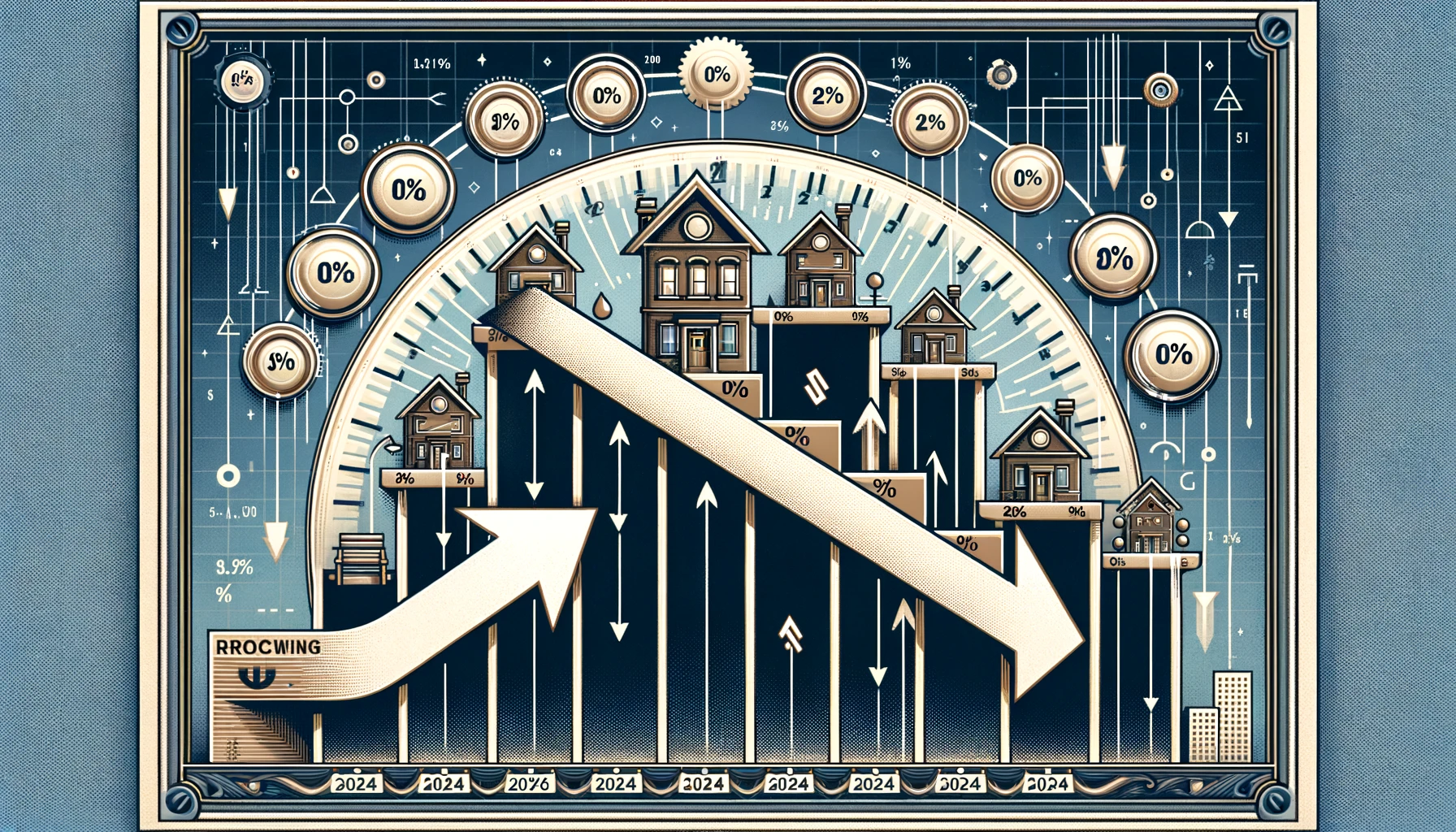
Navigating the financial landscape can often feel like interpreting a complex tapestry of trends, policies, and global events. For those looking to the horizon, one question stands out in the realm of real estate: what are the prospects of lower mortgage rates in 2024? Let’s dissect the elements that could influence mortgage rates in the near future, providing homeowners and investors with a clear picture of what to expect.
Economic Recovery Post-Pandemic
The aftermath of the COVID-19 pandemic continues to cast a long shadow over global economies. Recovery trajectories vary, but a slower-than-anticipated rebound could prompt central banks to maintain or even lower interest rates to stimulate growth. If this scenario unfolds, mortgage rates could benefit, staying low to encourage borrowing and spending within the housing market.
Inflationary Trends and Central Bank Policies
Inflation is the specter that often haunts the economic policy decisions of central banks. Should inflation rates start to creep beyond target levels, the Federal Reserve may hike up interest rates to cool the economy, inadvertently causing mortgage rates to rise. However, if inflation remains in check, or deflationary pressures emerge, there’s a strong possibility that mortgage rates will dip in response.
The Bond Market Ballet
Mortgage rates dance closely with the yields on U.S. Treasury bonds. When bond prices rise due to higher demand, yields drop, and so do mortgage rates. A climate of economic uncertainty typically leads to a bond market rally as investors seek safer assets, which could drive mortgage rates down in 2024.
Technological Advancements in Mortgage Lending
Technology is a powerful force shaping the mortgage industry. Advances in fintech could streamline the lending process, reducing overhead costs for lenders and potentially passing savings onto consumers through lower mortgage rates. If these technological trends continue to gain momentum, they could exert downward pressure on mortgage rates in 2024.
Housing Market Supply and Demand
The basic economic principle of supply and demand will be a determinant factor for future mortgage rates. An increase in housing inventory, perhaps through new construction or a shift in market dynamics, could lead to lower mortgage rates as lenders compete to attract buyers. Conversely, a housing shortage might push rates upward as buyer competition intensifies.
Geopolitical Stability and International Investment
Mortgage rates are not immune to the ripples of international events. Geopolitical stability plays a role in maintaining confidence in the U.S. housing market. Foreign investment in U.S. real estate often leads to lower mortgage rates. Should the U.S. remain a prime destination for international real estate investors, this could contribute to a favorable mortgage rate environment in 2024.
Legislative Changes and Government Programs
Government policy changes and housing programs can impact mortgage rates. For instance, new subsidies for homebuyers or changes in housing finance regulations could create conditions conducive to lower mortgage rates. Close attention to legislative agendas and housing policy can offer insights into the direction of 2024 mortgage rates.
The Lender Landscape
The competition among lending institutions also affects mortgage rates. A competitive lending environment, spurred by non-traditional financial institutions and online mortgage brokers, may lead to lower mortgage rates as companies vie for business by offering the most attractive rates.
Global Economic Health
The global economy’s health influences the U.S. economic climate and, by extension, mortgage rates. If the global economy faces headwinds, it could lead to a risk-off sentiment where lower mortgage rates are used as a tool to encourage domestic investment.
The Predictive Power of Mortgage Rate Trends
Historical data and predictive analytics offer a window into future mortgage rates. While past performance is not indicative of future results, long-term trends can provide a framework for what to expect. Analysts will look at the trajectory of mortgage rates over the past decades to forecast future movements.
Global Economic Recovery Pace
The pace of global economic recovery post-pandemic is a critical factor. If the recovery is slower than anticipated, central banks, including the Federal Reserve, might continue with lower interest rates to stimulate economic growth. This scenario could lead to continued lower mortgage rates to encourage borrowing and investment in the housing market.
Impact of Government Stimulus Measures
The extent and impact of government stimulus measures introduced to counteract the pandemic’s economic fallout will also play a role. If these measures successfully boost the economy, the need for lower interest rates might diminish, potentially leading to a gradual increase in mortgage rates. However, if the stimulus measures fall short, an extended period of low rates is possible to further support economic recovery.
Housing Market Dynamics
The state of the housing market significantly influences mortgage rates. An increase in demand for homes, potentially fueled by continued remote work trends and demographic shifts, could lead to higher mortgage rates. Conversely, if there is a slowdown in the housing market due to economic uncertainties or decreased affordability, lower mortgage rates may persist as a strategy to stimulate market activity.
Inflation Expectations
Inflation expectations are closely watched by central banks. If inflation is expected to rise significantly, the Fed might increase interest rates to keep inflation in check, which would lead to higher mortgage rates. However, if inflation remains subdued, mortgage rates may stay low as the Fed aims to encourage spending and investment.
Technological Innovations in the Financial Sector
Continued technological advancements in the financial sector could lead to more efficient lending practices and reduced costs for lenders. These savings could be passed on to consumers in the form of lower mortgage rates, especially as competition among lenders intensifies with the rise of fintech and online lending platforms.
Consumer Confidence and Spending Behavior
Consumer confidence and spending behavior in the wake of the pandemic will influence economic growth and, consequently, mortgage rates. If consumer confidence remains high and spending rebounds, this could lead to a stronger economy and potentially higher mortgage rates. However, if consumers remain cautious and saving rates are high, lower mortgage rates might continue to encourage spending.
Long-term Trends in Remote Work
The long-term trends in remote work could reshape residential real estate demand, influencing mortgage rates. If remote work continues to be prevalent, there may be increased demand for housing in suburban and rural areas, affecting mortgage rates differently in various regions.
International Trade and Relations
International trade dynamics and foreign relations, particularly involving major economies like the U.S. and China, can impact global economic stability and investor confidence. Positive developments in international relations and trade agreements could bolster economic growth, leading to potential increases in mortgage rates.
Environmental Policies and Sustainable Housing
Environmental policies and the push towards sustainable housing could also influence the housing market and mortgage rates. Increased investment in sustainable housing development may spur new construction and renovation projects, potentially affecting the housing supply and demand balance and subsequently influencing mortgage rates.
Conclusion
“Future Expectations: Prospects of Lower Mortgage Rates in 2024” is an intricate question, influenced by a multitude of factors. From economic indicators and central bank policies to technological advancements and geopolitical events, each component will play a role in shaping the mortgage landscape of tomorrow. For those in the housing market, staying informed and agile will be crucial as these factors unfold.



